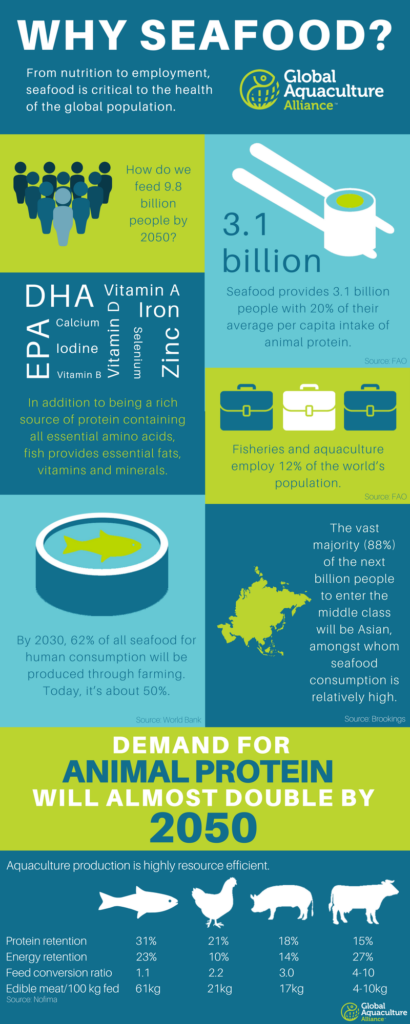Four Reasons Why You Should, And Will Be, Eating More Seafood
A burgeoning middle class. A more health conscious society. The emergence of e-commerce. Seafood consumption is poised to continue to grow in the years to come, thanks to favorable demographic shifts and technological advancements that are improving accessibility to food. Yet the reality of a world with finite resources and a global population that is projected to hit 9.8 billion people by 2050 is also playing an equally significant role in seafood consumption growth.
At one end of the spectrum is the want: People want, and are able to, eat more seafood. At the other end of the spectrum is the need: How does the world feed an additional 2.2 billion mouths between now and 2050?
Here are four reasons why seafood should, and will, play a greater role in your life in the years to come. Go ahead, eat more seafood!
The want:
1) On average, 160 million will join the middle class annually over the next five years, according to Brookings. The vast majority (88 percent) of the next 1 billion people to enter the middle class will be Asian. With greater wealth comes an upgraded diet, i.e. more people eating more protein in Asia, where seafood consumption is already relatively high. And with the emergence of e-commerce, seafood, the world’s No. 1 traded food commodity, is only becoming more accessible.
2) In addition to being a rich source of easily digested, high-quality protein containing all essential amino acids, seafood provides essential fats (such as long-chain omega-3 fatty acids like DHA and EPA), vitamins (D, A and B) and minerals (such as calcium, iodine, zinc, iron and selenium).
The need:
3) Seafood provides more than 3.1 billion people with almost 20% of their average per capita intake of animal protein, according to the United Nations Food and Agriculture Organization (FAO). Seafood represents 17% of the global population’s intake of animal protein and 6.7% of all protein consumed. With a global population that is projected to hit 9.8 billion people by 2050, those numbers are only expected to climb.
4) Because of a world with finite resources, the need to produce food more efficiently and responsibly is apparent. When comparing an animal’s ability to retain protein and energy and to convert food to flesh, fish is far and away the winner. Case in point: A fish fed 100 kilograms of feed produces 61 kilograms of edible meat. Conversely, a chicken fed 100 kilograms of feed produces 21 kilograms of edible meat. For pigs and cows, that number is even lower — 17 kilograms and 4 to 10 kilograms, respectively.

Download this and other great infographics from the GAA Member Toolkit.




